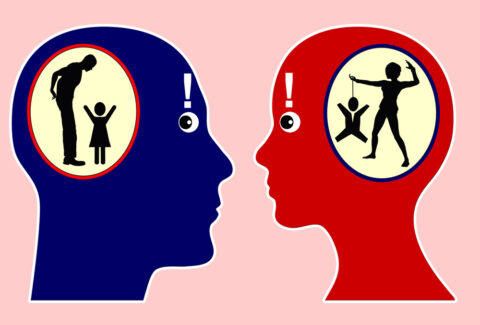Transactional Analysis Therapy: The Language of the Soul, the Science of Change

Transactional Analysis Therapy: The Language of the Soul, the Science of Change
In every conversation, beneath every conflict, hidden in the spaces between words, something deeper is happening. We’re not just exchanging information, we’re exchanging identity, emotion, and legacy. We are playing out patterns, roles, and scripts etched into us before we could even speak.
Transactional Analysis Therapy (TA)[1] is the map to this hidden terrain. It offers a language to decode the complexity of our human experience and a path to rewrite it with intention, courage, and freedom.
The Three Faces Within: Parent, Adult, Child
TA begins with a profound truth: We each carry within us three distinct parts: our Parent, our Adult, and our Child.[2] These are not just metaphors, but living states of being that guide how we think, feel, and relate.
- The Parent echoes the voices of the past: what we were taught, how we were treated, and the expectations we absorbed. It can be nurturing or critical, protective, or punishing.
- The Child is our emotional inheritance: vivid, sensitive, creative, wounded. It holds our wonder and our wounds.
- The Adult is our bridge to the present moment: rational, aware, and free to choose. It is the state from which we can observe, reflect, and transform.
When these three work in harmony, we move through life with grace, authenticity, and connection. But when we are stuck, when the Critic takes over, or the Wounded Child[3] cries out, we replay old scripts instead of writing new stories.
The Scripts We Didn’t Choose
A child, in their innocence, tries to make sense of a complex world. In doing so, they write a life script, a narrative about who they are, what they deserve, and what the world expects of them. This script is usually unconscious, but it directs the show.
“I must be perfect to be loved.”
“I’m not good enough.”
“I always mess things up.”
These beliefs were formed to survive. But in adulthood, they confine us. TA helps us uncover the script we didn’t know we were following, and gives us the pen to write something new.
Transactions: More Than Just Words
Every interaction is a transaction between ego states. A boss yells, and you shrink. A partner nags, and you rebel. A friend comforts, and you soften. These exchanges are not random; they are patterns. TA allows us to see the pattern, name it, and change the dance.
By bringing awareness to whether we are speaking from our Parent, Adult, or Child, and to which ego state the other person is responding from, we begin to unlock the power of conscious communication. What once led to conflict can now lead to connection.[4]
Psychological Games and the Drama Triangle
Too often, we find ourselves caught in emotional games we don’t fully understand. We rescue others until we resent them. We blame, then feel guilty. We become victims in our own stories.
This is the Drama Triangle: Victim, Persecutor, Rescuer. It is a trap.
TA reveals how we unconsciously fall into these roles and teaches us to step into a more empowered triangle:
- The Victim becomes the Creator
- The Persecutor becomes the Challenger
- The Rescuer becomes the Coach
This shift is more than semantic. It is revolutionary. It is the difference between living by default and living by design.
Strokes, Intimacy, and the Need to Be Seen
We are all seeking one thing: Recognition. In TA, this is called a stroke[5]—a unit of acknowledgment. A look, a word, a touch, a presence. We thrive on strokes, and in their absence, we may even invite negative attention — just to feel seen.
TA teaches us to give and receive strokes more freely, to recognize our stroke economy (the rules we’ve learned about what kind of attention is acceptable), and to cultivate emotional intimacy that is safe, mutual, and healing.
Contracts, Re-Decisions, and True Change
TA is not passive. It doesn’t merely observe. It invites action. Through therapeutic contracts,[6] clients name what they want to change. Through re-decision therapy, they reclaim the moment where the script was written and choose again — with the insight and power of the Adult ego state.
The past doesn’t have to dictate the future.
Old patterns don’t have to win.
And the child within us doesn’t have to be frozen in fear.
In TA, healing isn’t about becoming someone new. It’s about remembering who you were before the world told you who you should be.
The Invitation of TA: Awareness, Autonomy, Intimacy
At its core, TA invites us to live from three life-giving principles:
- Awareness – To know what we’re doing and why.
- Autonomy – To choose how we think, feel, and act.[7]
- Intimacy – To connect with others authentically, without masks or games.
In a world where so many are trapped in reactivity, perfectionism, emotional distance, or unspoken pain, TA offers something sacred: A mirror, a map, and a method for change.
It gives us the tools not only to understand ourselves, but to transform ourselves—and our relationships—at the deepest level.
Transactional Analysis Therapy is more than a theory.
It is a path to freedom.
It is the art to help your patients and clients rewrite their story—
One choice, one transaction, one stroke at a time.
Would you like to learn more about Transactional Analysis Therapy?
If so, we invite you to join us for our Transactional Analysis Certificate Course, starting on July 9, 2025, from 7-9pm (EDT) and running until September 2, 2025. Together, we will uncover how to help your clients and patients step out of the script.
Come as you are—no matter the script!
[1] Solomon, Carol. “Transactional analysis theory: The basics.” Transactional analysis journal 33.1 (2003): 15-22.
[2] Thomson, George. “The identification of ego states.” Transactional Analysis Journal 2.4 (1972): 46-61.
[3] Hargaden, Helena, and Charlotte Sills. “Deconfusion of the child ego state: A relational perspective.” Transactional Analysis Journal 31.1 (2001): 55-70.
[4] Vos, Joel, and Biljana van Rijn. “The evidence-based conceptual model of transactional analysis: A focused review of the research literature.” Transactional Analysis Journal 51.2 (2021): 160-201.
[5] Cornell, William F., et al. “Strokes.” Into TA. Routledge, 2018. 39-58.
[6] Rotondo, Anna. “Rethinking contracts: The heart of eric berne’s transactional analysis.” Transactional Analysis Journal 50.3 (2020): 236-250.
[7] White, Tony. “Towards a theory of emotional autonomy.” International Journal of Transactional Analysis Research & Practice 15.1 (2024).



